Gensler’s ambitious new full-floor office in San Francisco is a balancing act between future and past, with a healthy dollop of marketing thrown in.
The past is obvious to anyone stepping through a cherub-adorned stone arch into the lobby of a building originally designed by legendary Chicago architect Daniel Burnham in 1892. Or the steel structural column that stands incongruously off-center toward one end of a polished, white barrel-vaulted passage inserted by Gensler to connect two portions of the 45,000-square-foot second-floor space. The present is marked by elements such as the passage, embedded with speakers providing ambient noise and illuminated by a sinuous neon tube overhead. As for the marketing, the choreographed overlap of materials, eras, and moods aims to conjure up a comfortable vibe attuned to the post-pandemic landscape, yet rooted in a sense of place.
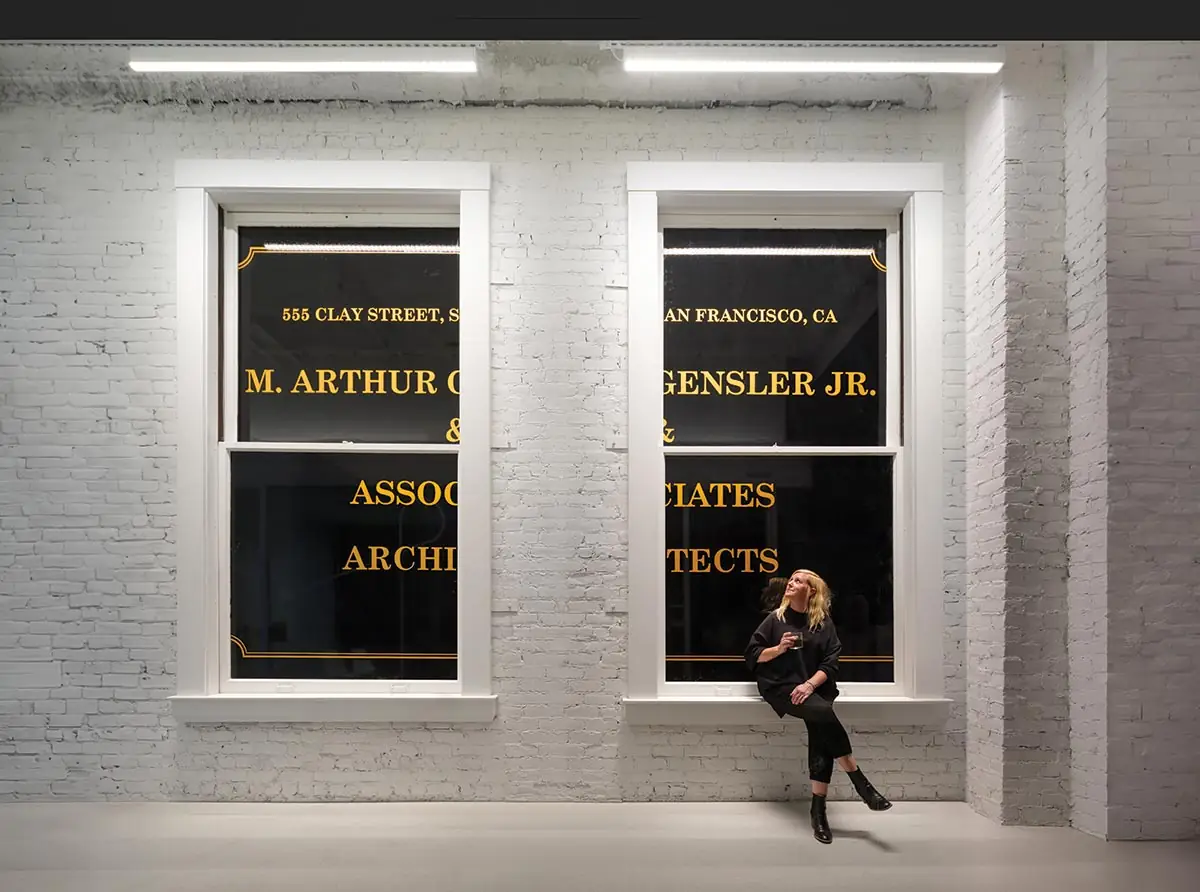
1
Gensler’s original sign (1) is hand-painted onto two windows of the Mills Building (2). Photos © Jason O’Rear, click to enlarge.
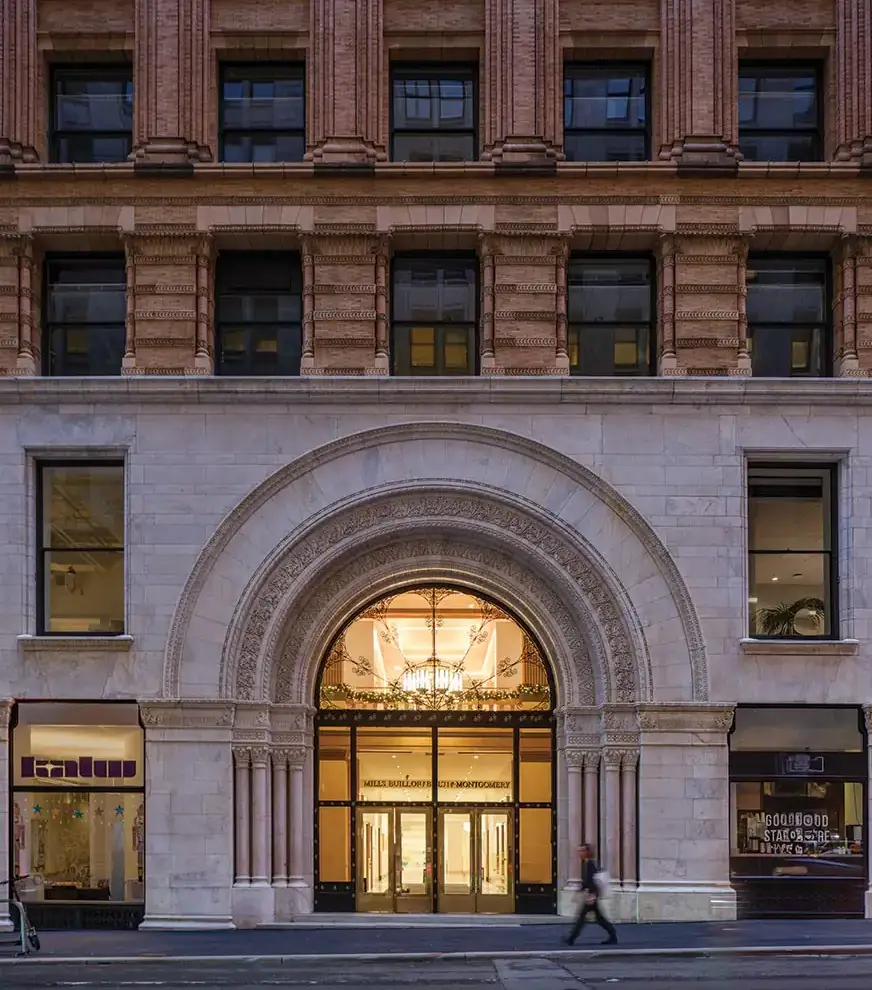
2
“The functionality of work is the primary thing being showcased,” says Luda Hoe, a senior associate at the firm, which was founded by Art Gensler in San Francisco in 1965 and now has more than 6,000 employees worldwide. “The palette and look might not be everyone’s, but we can demonstrate how we got there.”
The office is Gensler’s third location in the city in the past decade, a trajectory that reflects the city’s changing fortunes.
The first move came when a booming tech sector priced the firm out of its space along the Embarcadero and into a nondescript 1970s tower (part of the office, one of Gensler’s six “hub” headquarters, was spun off to nearby Oakland). The move to Burnham’s Mills Building takes advantage of lower rents to occupy a marquee space in the heart of the traditional Financial District; it also allows the firm to test out running an office with no assigned seating, even though all employees are required to be in the office or on-site five days a week. So the goal when design began in the summer of 2022 was to conceive a workplace with a variety of spaces and sensations, both to placate employees and to intrigue current or potential clients.
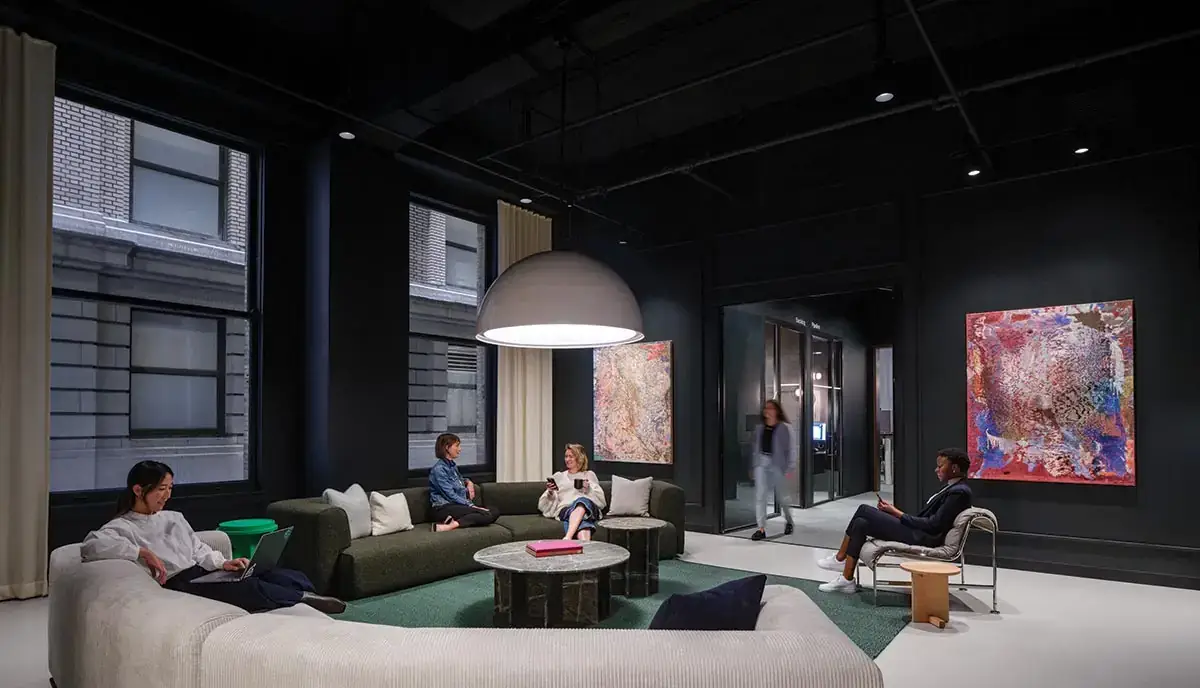
3
The office includes a variety of work areas—from lounges (3) and communal gathering spots (4) to spaces for the display of samples (5). Photos © Jason O’Rear
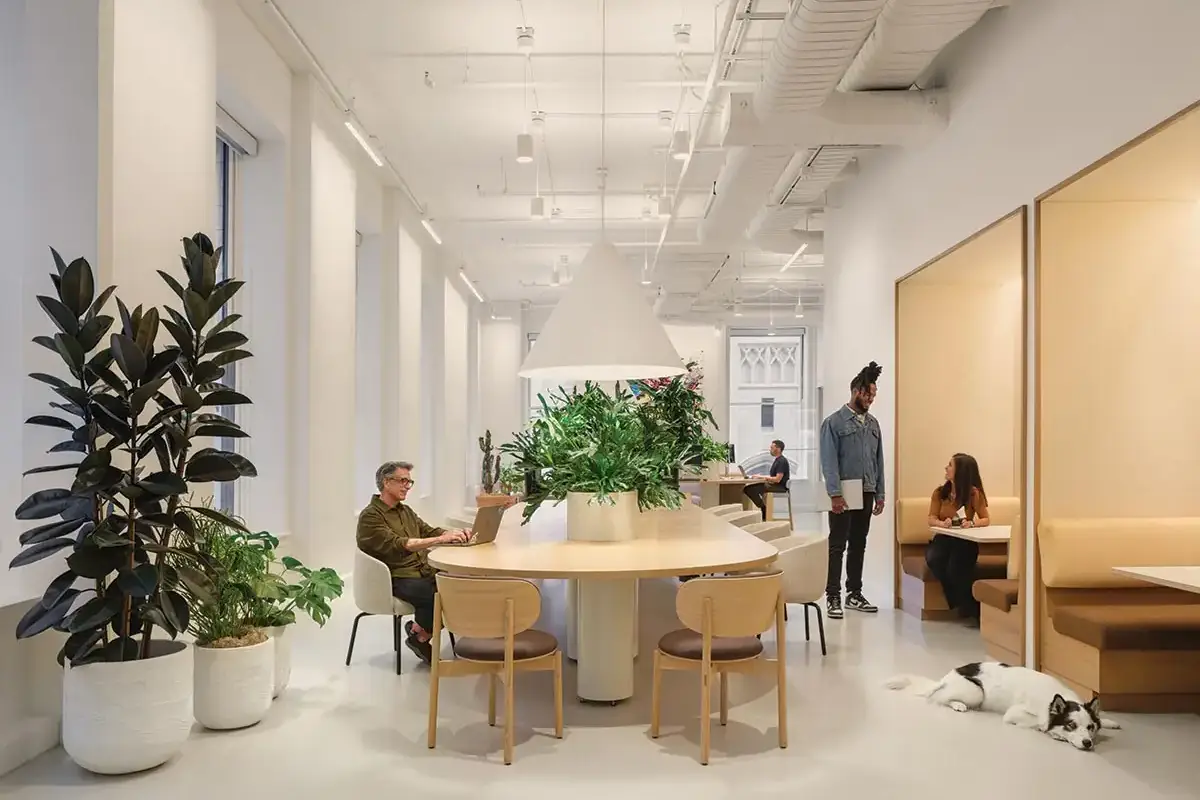
4
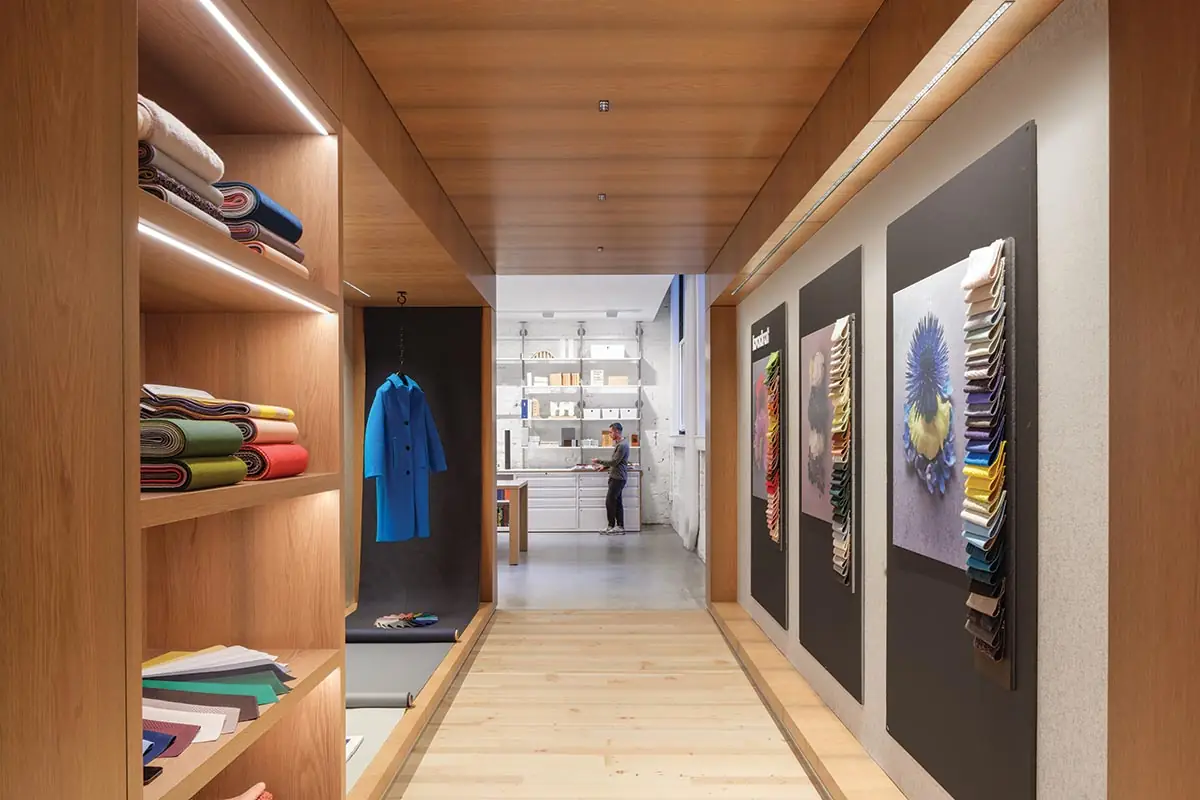
5
The response was a space loosely divided into three sections—the Exchange, the Hall, and the Vault.
The first is very much a lively common area, with a variety of sofas and lounge-like seating booths as well as the obligatory stylized coffee station. The structural brick walls and ceiling ducts are exposed but then painted white, that trendy cross between a chic café and a dentist’s office, while the flooring is wood salvaged from Bay Area construction sites.
Commotion is constant, and that was anticipated from the start: “We’re a global company,” points out Kelly Dubisar, a Gensler principal and the project’s design director. “We get a ton of visitors.”
The Hall is reached through the barrel-vaulted passage, with its limewashed walls. “The tunnel is meant to be a palate cleanser,” Dubisar says (though the steel column, discovered when walls were being torn out, adds a happily discordant note), and is conceived as an easily adaptable environment for teams gathering to work on projects. The flexibility includes custom pin-up boards that can hang from wooden pegs. These line the central walkway beneath a 60-foot-long skylight, creating easily movable “walls” when needed.
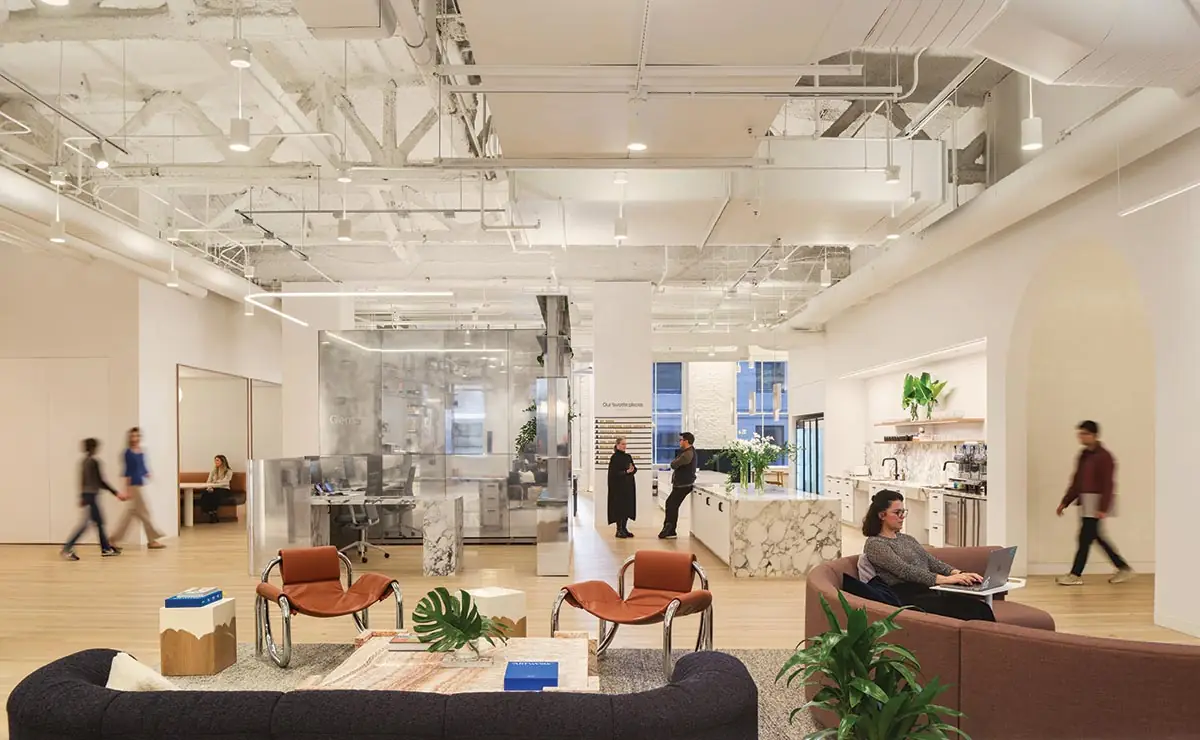
6
The Exchange, a social hub (6), connects the Hall via a vaulted passageway (7). Photos © Jason O’Rear
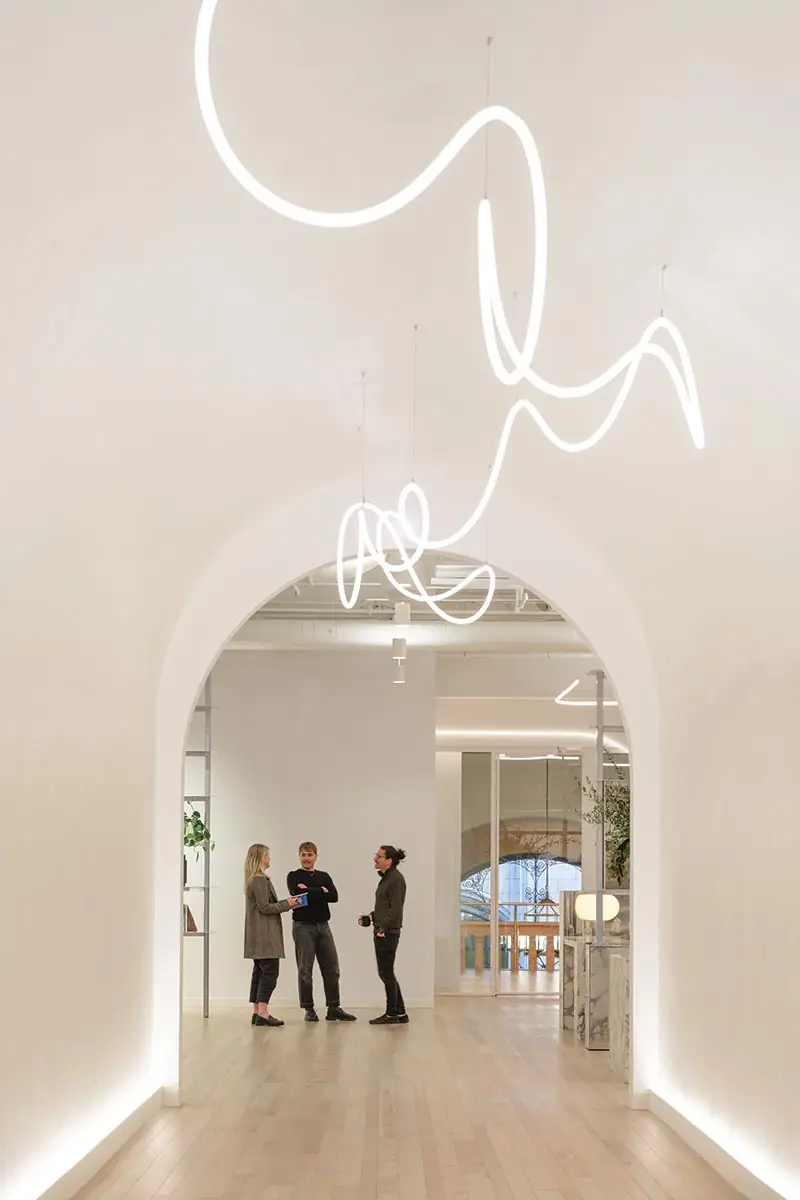
7
The final section of the office, the Vault, draws its name from a long-ago bank vault that has been converted into a conference room; the area itself is dimly lit, with seating and tables arranged to allow space for quiet, more concentrated work.
If this sequential arrangement sounds mannered, in real life it feels natural, despite the (at times) theatrical air. There’s also a richness derived from an emphasis on sustainability that runs throughout, down to mock-terrazzo flooring in the Hall made from a biopolymer that mimics concrete without the carbon impact. Even the product library adds to the messaging: every item on display meets preset Gensler standards aimed at reducing carbon emissions.
“A huge part of this is showcasing what we believe is the future and how to demonstrate sustainability,” Dubisar explains. “It doesn’t have to break the bank, but clients have to see what’s possible and know the questions to ask.”
Gensler employees—320 of them—began settling in last September, and both Hoe and Dubisar say the transition has been smooth, though inevitably some areas have proved more popular than others. In the Vault, glassed-in nooks not much larger than phone booths tend to be claimed by the same employees day after day. Nearby spaces overlooking a shadowed alleyway are, by contrast, often vacant.
“People have found their homes. We didn’t want to assign places to sit, but people are gradually assigning spots to themselves,” Dubisar says philosophically. “It’s fascinating to see the way everyone uses the office—sometimes as I planned it, and sometimes not.”
Click plan to enlarge
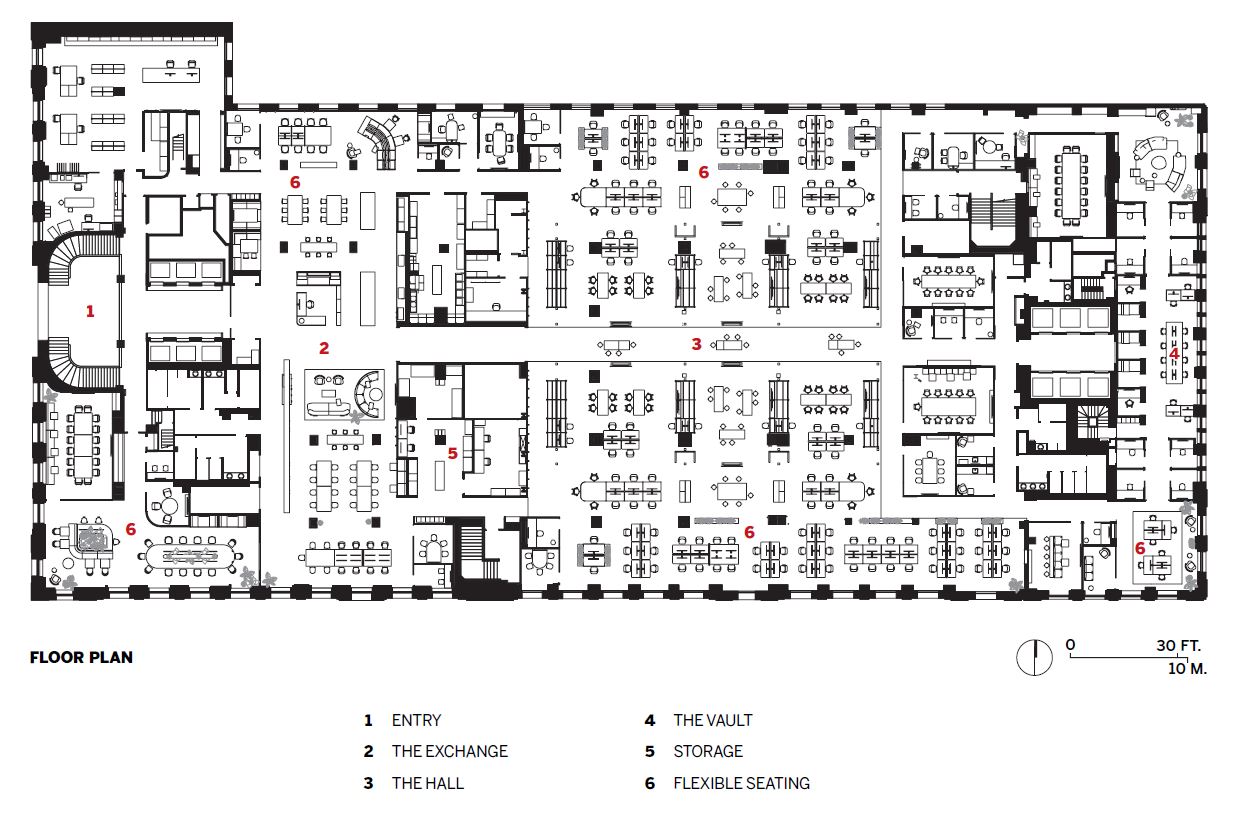
Credits
Architect:
Gensler — Randy Howder, Hao Ko, managing directors and principals; Daniel Pamperin, project director and principal; Kelly Dubisar, design director and principal; Louis Schump, strategy director and principal; Luda Hoe, technical director; Samantha Lewis, Marissa Everling, Reema Farhat, Khizar Zaheer, Catie Baldwin, Janice Cavaliere, Jarrod Holt, Kevin Burch, Collin Peters, Steve Woods, Christian Bannister, Laura Mihailoff, Jacob deHahn, Gail Napell, Jeehee Han, Nova Punongbayan, Julia Kan, Thomas Luc-Marie Godenir, Jeffrey Ding, Wendi Gonzalez, Melinda Uno, Alison Mack, project team
Engineers:
PAE (m/e/p); Tipping Structural Engineers (structural)
Consultants:
Schuler Shook (lighting); Salter (acoustics); Incrementum (planting); WBE (IT/security)
General Contractor:
Principal Builders
Owner:
The Swig Company
Size:
45,500 square feet
Cost:
Withheld
Completion Date:
September 2023
Sources
Lighting:
Litenet, Lucifer, Ecosense, Tivoli, Lumenture, Vode, And Light, Louis Poulsen, Barbican, Nemo, Santa & Cole, In Common With, Marset, Cedar & Moss, Marset (ambient); Lumenworks, Finelite, Litenet (downlights); Lutron (dimming)
Hardware:
Glyn Johnson, LCN (closers); Schlage (locksets); Tectus Blind Door Hinges (special hardware)
Doors:
S/I Door and Hardware
Interior Finishes:
Armstrong, Filzfelt (acoustical ceilings); Trivati (demountable partitions); Design Workshops, One Hat One Hand (custom woodwork); Benjamin Moore, Dunn Edwards, Farrow & Ball, Wolf Gordon, Portola Paints (paints and stains); Wall & Deco, Kristy Stafford, Forbo, Brewster Home Fashions, Slalom (wallcoverings); HPL, Formica, Abet Laminati (surfaces); Coverings ETC, Durat, Kvadrat; Tarkett, Roppe, Allstate Rubber, Johnsonite (resilient wall base)



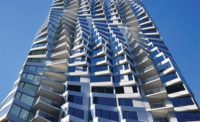
Post a comment to this article
Report Abusive Comment